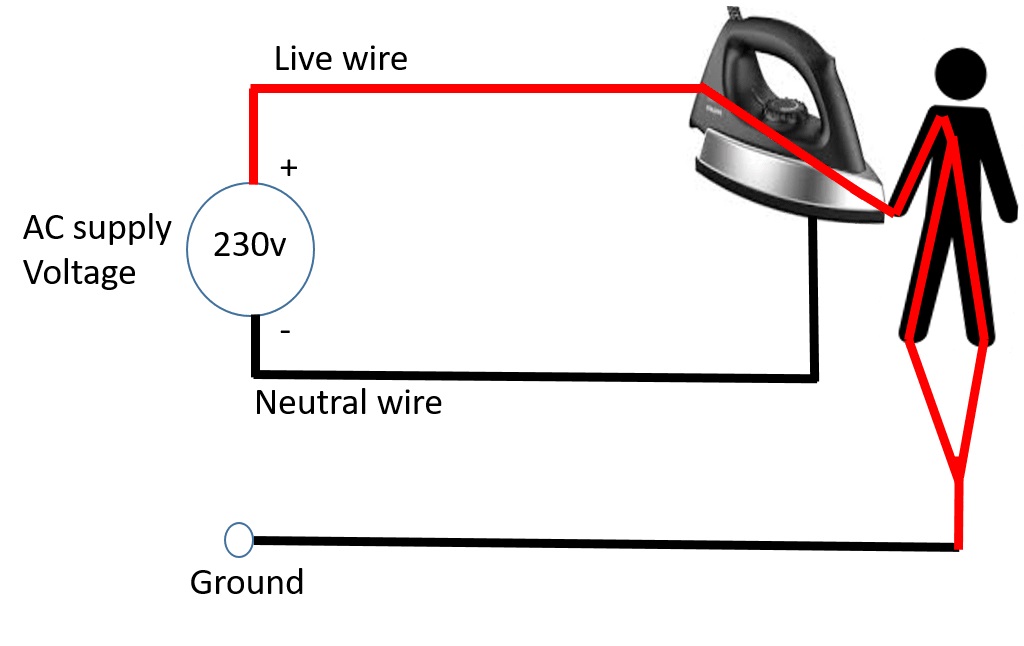Hazards of electrical shock
Many people die each year as a result of electrical shock. Death from electrical shock results from ventricular fibrillation, paralysis of the respiratory center or a combination of the two. Ventricular fibrillation is a condition wherein the heart quivers but does not beat. It is caused when a certain amount of current passes through the heart area.
Paralysis of the respiratory center occurs when a certain amount of current passes through the respiratory control center in the brain. In such a case, breathing stops and death results from asphyxiation.
The amount of current and the current’s path are two important factors affecting the extent of injury. The amount of current depends on voltage and body resistance. Body resistance can be very high or very low, depending on whether the skin is dry (high resistance) or wet (low resistance). Contact area also affects body resistance—a person in a bathtub has both wet skin and a large contact area and is almost certain to be electrocuted if a shock is received. Current path through the body will be directly from the point of entry to the point of exit, because current flows through all parts of the body with equal ease. Electrocution may occur when the heart area or the respiratory control center of the brain is in the current’s path.
The amount of current which the human body can tolerate is very small, and is measured in milliamperes (a milliampere is one thousandth of an ampere). A rough guide based on the Accident Prevention Manual for Industrial Operations, published by the National Safety Council, is as follows:
| Current (milliampere) |
Effect or Injury |
|---|---|
| 1 to 8 | Shock sensation |
| 8 to 15 | Painful shock |
| 15 to 20 | Painful shock with control of adjacent muscles lost. Individual can not let go. |
| 20 to 50 | Painful shock with severe muscular contractions and difficult breathing. |
| 50 or more | May be fatal |
Under special conditions (say, wet skin and, hence, low resistance) voltages from 45 to 60 have proved fatal. Any voltage above 12 is considered dangerous and becomes more dangerous as it increases.
A few simple rules should be observed to prevent electrical shock or to minimize injuries resulting from electrical shock.
